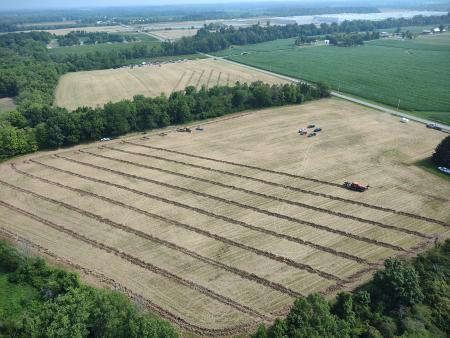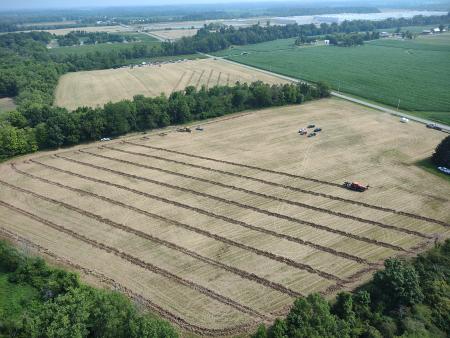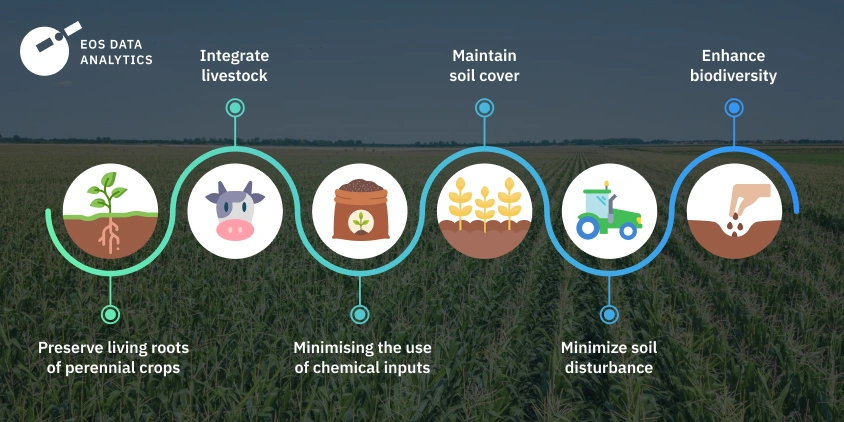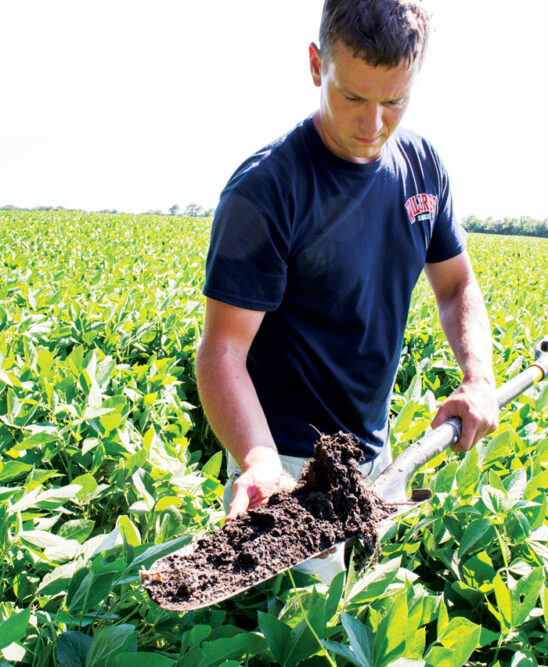
Regenerate Your Land, Regenerate Your Life: Why Regenerative Farming is Taking Root
Imagine a farm, once barren and depleted, now teeming with life. Vibrant cover crops blanket the soil, chickens peck happily among the rows, and the air hums with the buzz of pollinators. This isn't just a dream; it's the reality of regenerative farming. In a world grappling with climate change and soil degradation, regenerative agriculture is gaining momentum as a powerful solution. From articles in mainstream publications like The New York Times to increased research funding and farmer-led initiatives, the movement is undeniable. Regenerative farming goes beyond organic, focusing on soil health, carbon sequestration, biodiversity, and a holistic approach to land management. This blog post will explore the profound benefits of regenerative farming and provide practical steps for homesteaders and gardeners to adopt these life-giving practices.

A diversified regenerative farm showcases the principles of healthy soil, cover crops, and livestock integration, promoting sustainability and resilience.
The Science Behind the Soil
Regenerative farming operates on several core principles, all working in harmony to restore and enhance the natural ecosystem. These include minimal soil disturbance (no-till or reduced tillage), the use of cover crops, strategic crop rotation, the application of compost, the integration of livestock (where appropriate), and the promotion of biodiversity. At the heart of these practices lies the focus on soil health. Healthy soil is a complex living ecosystem teeming with beneficial microbes, fungi, and other organisms. These organisms play a crucial role in breaking down organic matter, releasing nutrients, and improving soil structure. Increased organic matter leads to better water retention, reduced erosion, and improved nutrient cycling.
Perhaps most importantly, regenerative farming combats climate change through carbon sequestration. Plants absorb carbon dioxide from the atmosphere during photosynthesis. When plants die and decompose, or when cover crops are tilled into the soil, this carbon is stored in the soil. Regenerative practices, like no-till farming and cover cropping, maximize carbon sequestration by minimizing soil disturbance and increasing the amount of organic matter in the soil. This helps to reduce greenhouse gas emissions and mitigate the effects of climate change. The Rodale Institute has been a pioneer in researching the benefits of regenerative agriculture, demonstrating its potential to sequester significant amounts of carbon.
This placeholder image represents where an infographic from a reputable agricultural website, illustrating the carbon cycle in a healthy, regeneratively farmed landscape, would be embedded.
Practical Applications for Homesteaders and Gardeners
You don't need to be a large-scale farmer to embrace regenerative practices. Homesteaders and gardeners can easily incorporate these principles into their own backyards. Here are a few actionable tips:
- No-Till Gardening: Start a no-till garden bed using the lasagna gardening or sheet mulching method. Layer cardboard, compost, leaves, and other organic materials to create a rich, fertile planting area without digging.
- Cover Cropping: Plant cover crops like clover, rye, or buckwheat during the off-season to improve soil health, suppress weeds, and prevent erosion. Choose cover crops that are well-suited to your climate and soil type.
- Composting: Create a simple compost pile using kitchen scraps, yard waste, and other organic materials. Compost adds valuable nutrients to your soil and helps to improve its structure. Alternatively, consider vermicomposting (worm composting) for a compact and efficient composting system.
- Crop Rotation: Rotate your crops each season to prevent nutrient depletion and reduce pest and disease problems. A simple crop rotation plan might involve alternating between leafy greens, root vegetables, and legumes.
- Water Conservation: Collect rainwater in barrels or tanks for irrigation. Use greywater (water from showers and sinks) to water non-edible plants. Implement drip irrigation to deliver water directly to plant roots, minimizing water waste.
Here’s a summary of these key regenerative practices:
| Practice | Benefits |
|---|---|
| No-Till | Reduced soil disturbance, improved soil structure, increased water retention |
| Cover Cropping | Improved soil health, weed suppression, erosion control, increased carbon sequestration |
| Composting | Adds nutrients to soil, improves soil structure, reduces waste |
| Crop Rotation | Prevents nutrient depletion, reduces pest and disease problems |
| Water Conservation | Reduces water waste, conserves resources, promotes drought resistance |
For further learning, explore resources like the Rodale Institute and local agricultural extension offices.

A no-till garden bed flourishes with diverse cover crops, showcasing healthy soil and thriving plant life.
Building Community Resilience Through Regenerative Agriculture
Regenerative farming isn't just about improving soil health; it's also about building stronger, more resilient communities. By supporting local farmers who use regenerative practices, we can create a more sustainable and equitable food system. Community gardens and farmers' markets play a vital role in promoting regenerative agriculture by connecting consumers with local, sustainably grown food. These initiatives also provide opportunities for education and outreach, spreading awareness about the benefits of regenerative farming and inspiring others to get involved.
For example, consider the story of Singing Frogs Farm in Sebastopol, California. This small-scale farm has transformed their land using regenerative practices, increasing biodiversity, sequestering carbon, and creating a thriving ecosystem. Through careful observation and experimentation, they have developed innovative techniques for building soil health and maximizing yields. Their success is a testament to the power of regenerative farming to create a more sustainable and resilient food system.
You can get involved in your local food system by volunteering at a community garden, shopping at a farmers' market, or advocating for policies that support regenerative agriculture. Even small actions can make a big difference in building a more sustainable and resilient food system for your community.

A bustling farmers' market displays colorful local produce and exemplifies the power of community support for sustainable agriculture.
Conclusion
Regenerative farming offers a path towards a healthier planet and more resilient communities. By focusing on soil health, carbon sequestration, biodiversity, and a holistic approach to land management, these practices offer a powerful solution to some of the world's most pressing challenges. Whether you're a homesteader, gardener, or simply someone who cares about the environment, you can play a role in the regenerative agriculture movement. Start implementing regenerative practices in your own garden or homestead, support local regenerative farmers, and spread the word about the benefits of this transformative approach to agriculture. Every small change can contribute to a larger movement, creating a more sustainable and abundant future for all.
Call to action: What are your favorite regenerative farming techniques? Share them in the comments below!